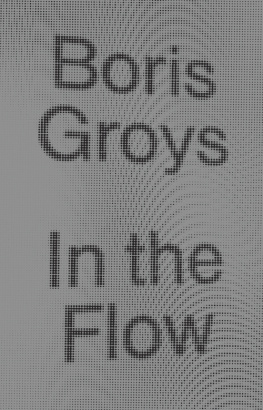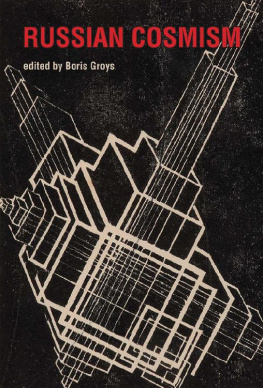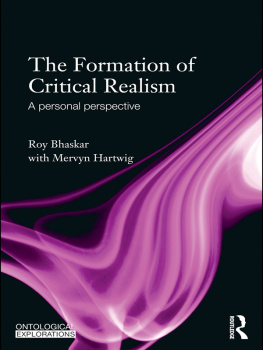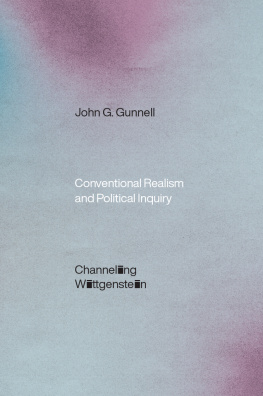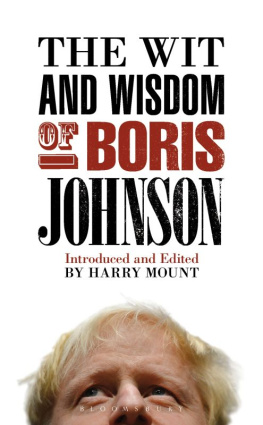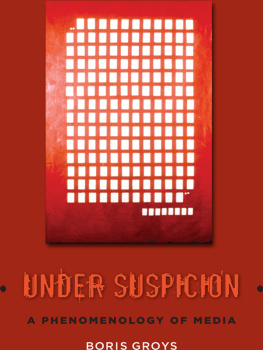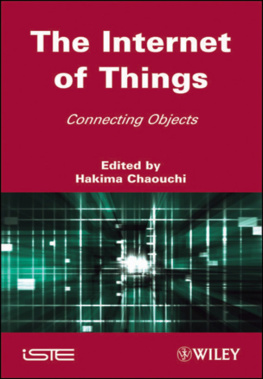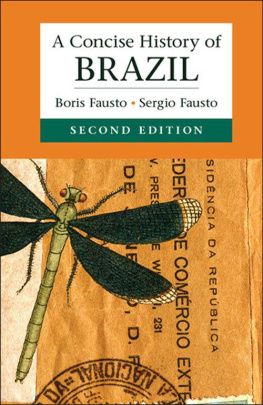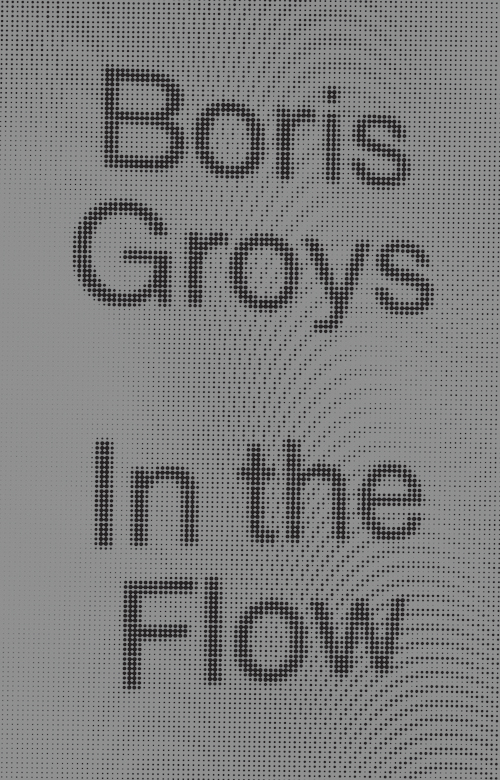In the Flow
BY
BORIS GROYS

This eBook is licensed to Anonymous Anonymous, b3056733@trbvn.com on 04/01/2016
First published by Verso 2016
Boris Groys 2016
The publisher would like to thank various publications that previously published the following chapters: Installing Communism, Utopia and Reality: El Lissitzky/Ilya and Emilia Kabakov, Eindhoven: Van Abbe Museum, 2012; Clement Greenberg, Art and Culture: Critical Essays , The Books That Shaped Art History, London: Thames & Hudson, 2013; Global Conceptualism Revisited, Moscow Symposium: Conceptualism Revisited, Berlin: Sternberg Press, 2012; Hatje Cantz, Google: Words beyond Grammar, 100 Notes Thoughts No. 046, Kassel: DOKUMENTA 13, 2012; WikiLeaks: The Revolt of the Clerks, or Universality as Conspiracy, OPEN, Cahier on Art and the Public Domain, Vol. 10, No. 22, , Rotterdam: Nai Publishers, 2011.
All rights reserved
The moral rights of the author have been asserted
1 3 5 7 9 10 8 6 4 2
Verso
UK: 6 Meard Street, London W1F 0EG
US: 20 Jay Street, Suite 1010, Brooklyn, NY 11201
versobooks.com
Verso is the imprint of New Left Books
ISBN-13: 978-1-78478-350-1
eISBN-13: 978-1-78478-349-5 (US)
eISBN-13: 978-1-78478-348-8 (UK)
British Library Cataloguing in Publication Data
Names: Grois, Boris, author.
Title: In the flow / Boris Groys.
Description: London ; New York : Verso, [2016] | Includes index.
Identifiers: LCCN 2015042581| ISBN 9781784783501 (hardback : alk. paper) | ISBN 9781784783495 (eISBN : US) | ISBN 9781784783488 (eISBN : UK)
Subjects: LCSH: Aesthetics. | Art Philosophy.
Classification: LCC BH39 .G698 2016 | DDC 111/.85 dc23
LC record available at http://lccn.loc.gov/2015042581
Library of Congress Cataloging-in-Publication Data
A catalog record for this book is available from the Library of Congress
Typeset in Sabon MT by Hewer Text UK Ltd, Edinburgh, Scotland
Printed in the US by Maple Press
This eBook is licensed to Anonymous Anonymous, b3056733@trbvn.com on 04/01/2016
Contents
This eBook is licensed to Anonymous Anonymous, b3056733@trbvn.com on 04/01/2016
At the beginning of the twentieth century, the artists and writers of the avant-garde started a campaign against art museums and generally against the preservation of the art of the past. They asked a simple question: Why are certain things privileged, why does society care about them and invest money in their conservation and restoration, while other things are delivered to the destructive power of time and nobody cares about their eventual dissolution and disappearance? The traditional answers to this question were no longer considered satisfactory. Thus, Marinetti proclaimed that the antique Greek statues are not more beautiful than a modern car or airplane. Yet one lets cars and airplanes perish and keeps the statues intact. It seems that we consider the past as more valuable than the present, but this is unjust and even absurd, because we live in the present and not in the past. Can we say that our own value is lower than the value of the people who lived before us? The avant-garde polemic against the institution of the museum was driven by the same egalitarian and democratic impulse as modern politics. It asserted the equality of things, spaces and, even more importantly, times, in analogy to the equality of men.
Now the equality of things and times can be realized in two different ways: by extending the museum privilege to all things, including all present things, or by abolishing it completely. Duchamps ready-made practice was an attempt in the first direction. However, this path did not take him far enough. The democratized museum could not include everything: Even if a limited number of urinals got a privileged place in some art museums, their numerous brethren were left in their usual non-privileged places in toilets all around the world. So only the second path remained. But to give up the museum privilege means to deliver all the things, including artworks, up to the flow of time. And thus the next question emerges: Can we still speak about art if the fate of artworks is no different from the fate of all other, ordinary things? Here I should stress the following point. Speaking about art entering the flow of time, I do not mean that art began to depict this flow as the old Chinese art did. Rather, I mean that art as such became fluid. There is a science that investigates all kinds of fluids and fluidity in general. It is called rheology. What I attempt in this book is the rheology of art discussion of art as flowing.
The modern and contemporary understanding of art as fluid seems to contradict arts original purpose: to withstand the flow of time. Indeed, in the context of early modernity, art functioned as a secular, materialist substitute for the lost belief in the eternal ideas and the divine spirit. Contemplation of works of art took the place of the contemplation of the Platonic ideal or of God. Through art, modern men had a chance to abandon, at least for a moment, the flow of vita activa and dedicate some time to the contemplation of images that had been contemplated by generations of men before their birth and would be contemplated by future generations after their death. The museum promised a materialist eternity secured not ontologically but rather politically and economically. In the twentieth century, this promise became problematic. Political and economic upheavals, wars and revolutions showed that this promise was hollow. The institution of the museum could never achieve a truly secure economic foundation and so it sought the backing of a stable political will. The museum, even if the desire for equality had not motivated the artistic avant-garde to start their struggle against it, could not be immunized against the power of time. The contemporary museum system is proof of it. That does not mean that museums have disappeared on the contrary, the number of them has been growing all over the world. Rather, it means that the museums themselves became immersed in the flow of time. The museum ceased to be a place for a permanent collection and became a stage for changing curatorial projects, guided tours, screenings, lectures, performances, etc. In our time, artworks permanently circulate from one exhibition to another, from one collection to another. And that means that they are getting more and more involved in the flow of time. Returning to the aesthetic contemplation of the same image means not only returning to the same object but also returning to the same context of contemplation: especially in our age, we have become keenly aware of the dependency of the artwork on its context. Thus, whatever else can be said about the contemporary museum, it has ceased to be a place of contemplation and meditation. But does this mean that by abandoning the goal of repeated contemplation of the same image, art has also abandoned its project to escape the prison of the present? I would argue that it is not the case.

